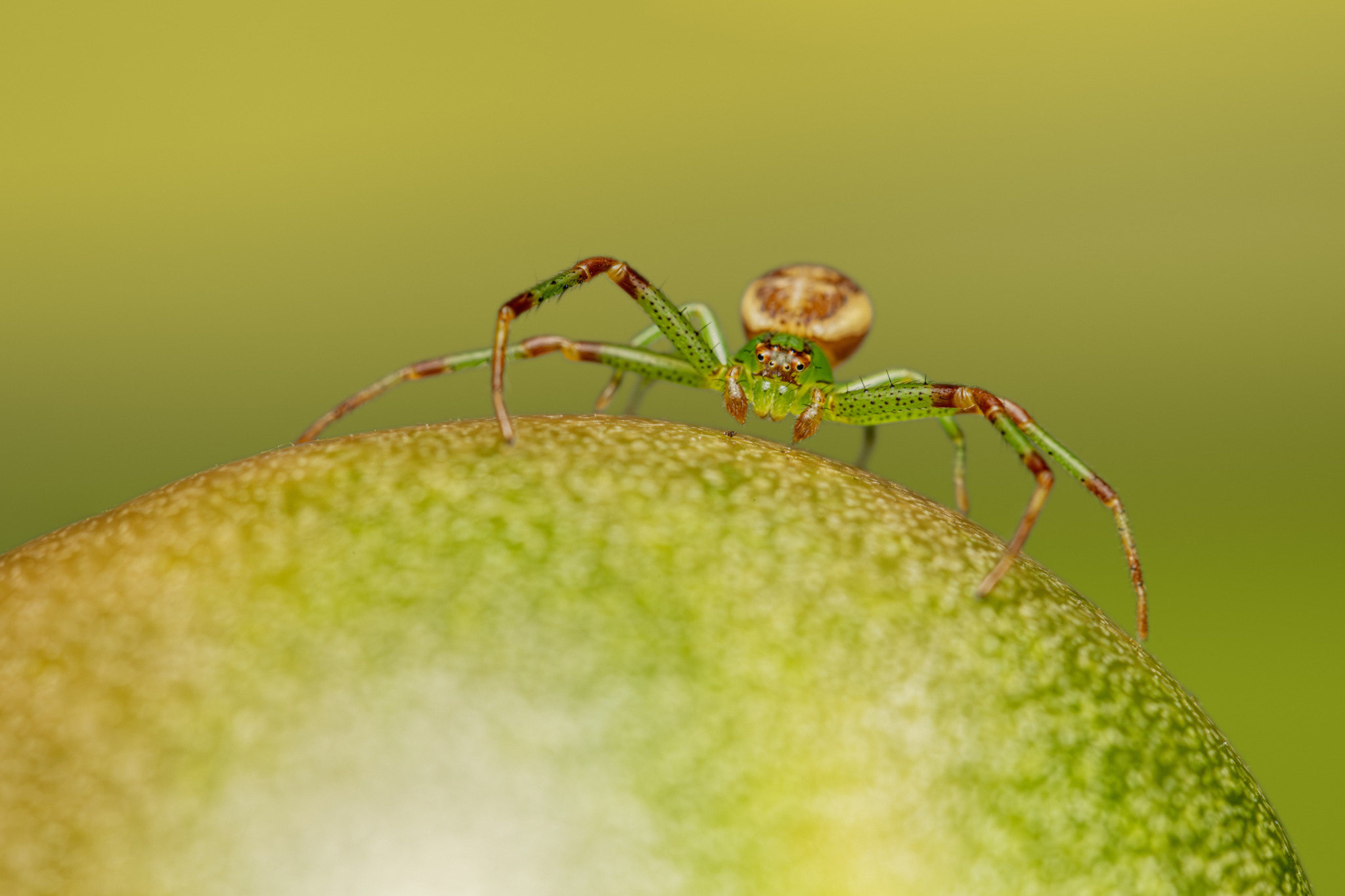🕷️ Green Crab Spider (Diaea dorsata)
The green crab spider, Diaea dorsata, is a small, beautifully camouflaged arachnid native to Europe and parts of Asia. Named for its crab-like stance and movement, this spider is well-known for its vibrant green coloration and remarkable stealth hunting skills among foliage.
🔍 Identification
- Size:
- Females: ~5–6 mm
- Males: ~3–4 mm
- Coloration:
- Body and legs are a striking leafy green
- The head (cephalothorax) is often reddish-brown with dark margins
- This coloration provides excellent camouflage in greenery
- Shape:
- Flattened body with sideways-extending legs, resembling a crab
- Eyes arranged in two curved rows on a slightly raised head
🌍 Distribution & Habitat
- Range:
- Widespread across Europe, parts of Asia, and into Russia
- Habitat:
- Prefers deciduous woodlands, shrubs, bushes, and forest edges
- Frequently found on leaves, especially in the lower vegetation layers
🕸️ Behavior & Ecology
- Ambush Predator:
- Does not build webs to catch prey
- Instead, it waits motionless on leaves or flowers for insects to come close
- Uses strong front legs to snatch prey, often pollinators like flies or bees
- Activity:
- Mostly active in late spring and early summer
- Males become more visible during mating season as they search for females
- Reproduction:
- After mating, females lay eggs in a silk sac attached to leaves
- They may guard the sac until the spiderlings hatch
🛡️ Adaptations
- Camouflage:
- Green coloration helps it blend seamlessly into foliage
- Aids both in avoiding predators and ambushing prey
- Crab-like Movement:
- Capable of moving sideways and backwards like a crab
- This agility helps in quickly capturing prey or escaping threats
📌 Summary
The green crab spider (Diaea dorsata) is a tiny master of disguise that thrives in leafy environments. With its bright green body and stealthy hunting tactics, it plays a key role in the ecological balance of forest edges and shrubs by preying on insects. Though small and often unnoticed, it exemplifies the incredible adaptations found in nature’s lesser-known hunters.
[chatGPT]
Visited 860 times, 2 visit(s) today
Views: 1239
Subscribe to the newsletter:
